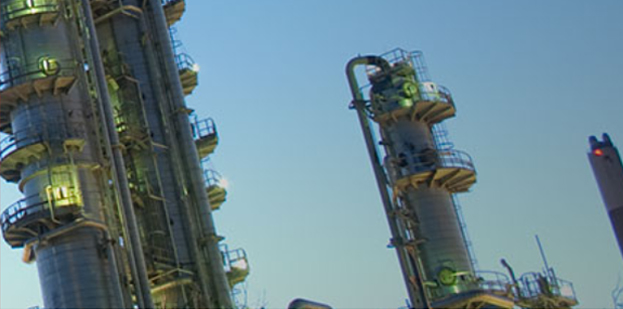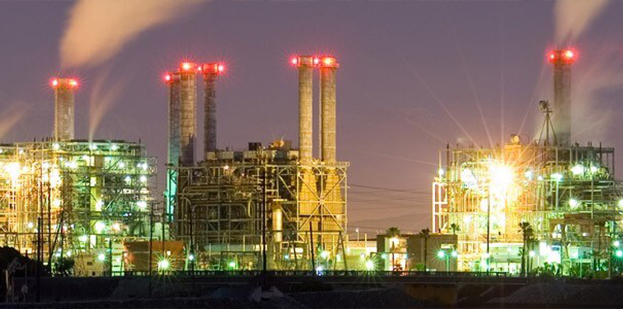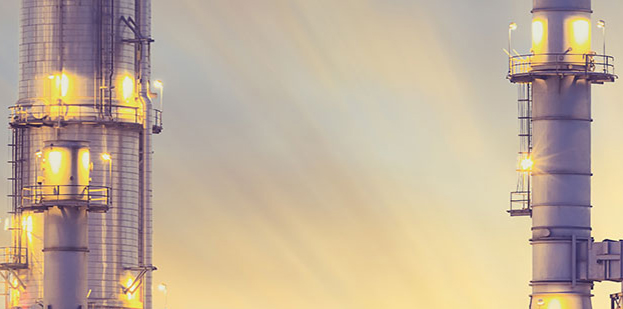The aim of the petroleum refining is to distill and separate valuable distillates (naphtha, kerosene, diesel) and atmospheric gas oil (AGO) from the crude feedstock with a complex distillation process. The steps of the process are able to be defined as follows:
- Preheat the crude feed utilizing recovered heat from the product streams
- Desalt and dehydrate the crude using electrostatic enhanced liquid/liquid separation (Desalter)
- Heat the crude to the desired temperature using fired heaters
- Flash the crude in the atmospheric distillation column
- Utilize pumparound cooling loops to create internal liquid reflux
- Product draws are on the top, sides, and bottom
Some of the different process units used in refineries are the following ones:
- Desalter unit washes out salt from the crude oil before it enters the atmospheric distillation unit.
- Crude Oil Distillation unit: Distills the incoming crude oil into various fractions for further processing in other units.
- Vacuum distillation unit: Further distills the residue oil from the bottom of the crude oil distillation unit, itis performed below atmospheric pressure.
- Naphtha hydro treater unit uses hydrogen to desulfurize naphtha from atmospheric distillation. Must hydrotreat the naphtha before sending to a catalytic reformer unit.
- Catalytic reforming unit: Converts the desulfurized naphtha molecules into higher-octane molecules to produce reformate, which is a component of the end-product gasoline or petrol. An important byproduct of a reformer is hydrogen released during the catalyst reaction. The hydrogen is used either in the hydrotreaters or the hydrocracker.
- Alkylation unit uses sulfuric acid or hydrofluoric acid to produce high-octane components for gasoline blending.
- Isomerization unit converts linear molecules to higher-octane branched molecules for blending into gasoline or feed to alkylation units.
- Distillate hydrotreater unit: Uses hydrogen to desulfurize some of the other distilled fractions from the crude oil distillation unit (such as diesel oil) after distillation units.
- Merox (mercaptan oxidizer) or similar units: Desulfurize LPG, kerosene or jet fuel by oxidizing undesired mercaptans to organic disulfides.
- Amine gas treater, Claus unit, and tail gas treatment convert hydrogen sulfide from hydrodesulfurization into elemental sulfur.
- Fluid catalytic cracking (FCC) unit: Upgrades the heavier, higher-boiling fractions from the crude oil distillation by converting them into lighter and lower boiling, more valuable products.
- Hydrocracker unit: Uses hydrogen to upgrade heavier fractions from the crude oil distillation and the vacuum distillation units into lighter, more valuable products.
- Visbreaker unit upgrades heavy residual oils from the vacuum distillation unit by thermally cracking them into lighter, more valuable reduced viscosity products.
- Delayed coking and fluid coker units: Convert very heavy residual oils into end-product petroleum coke as well as naphtha and diesel oil by-products.
AMPO POYAM VALVES has been involved since 1964 in the design and production of highly engineered solutions for the refinery processes, supplying the most critical and tough application demanded valves on this sector and specialized on the manufacturing of BALL, PLUG, BUTTERFLY, ANGLE, GATE, GLOBE and CHECK valves.






